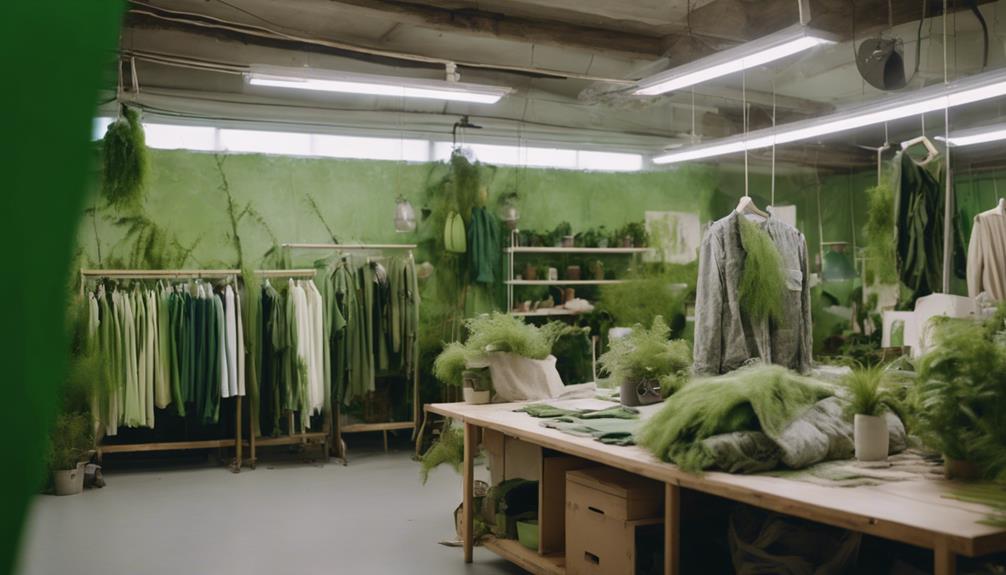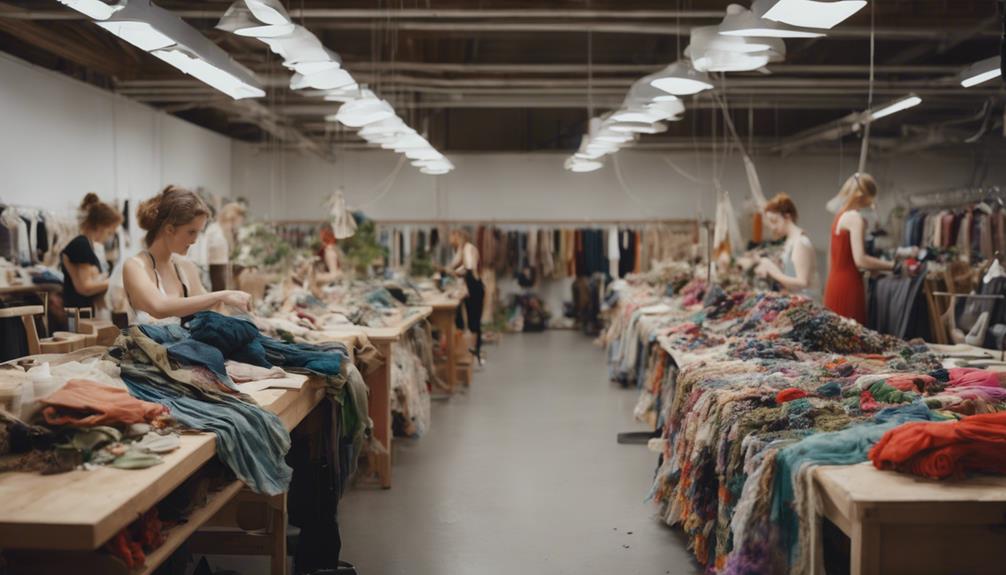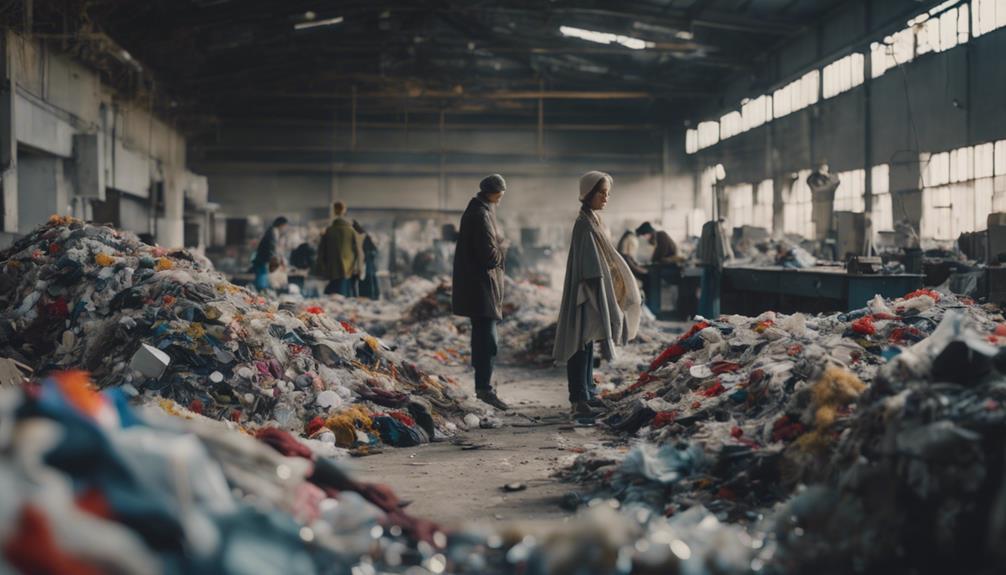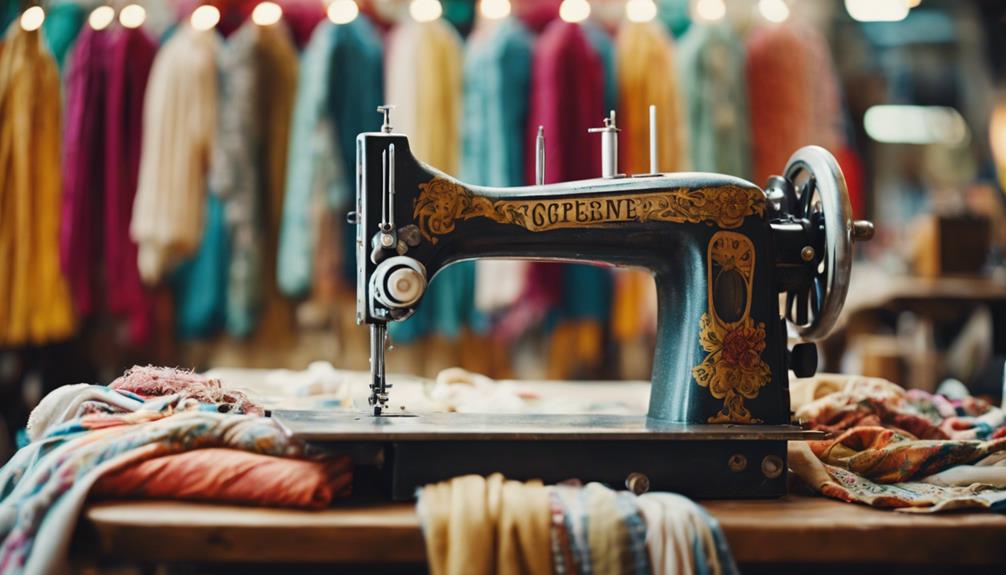Creating clothing that is respectful to the planet and its people is the essence of sustainable fashion design. This involves the use of eco-friendly materials and the implementation of ethical production techniques. However, it is important to remain cautious as many brands partake in greenwashing, where they make unsubstantiated claims. With more than 90% of shoppers seeking sustainable alternatives, the market is flooded with confusion. While it may seem like higher prices equate to sustainability, the reality is not as straightforward. True sustainable fashion requires transparency and consumer awareness. Educating yourself on the intricacies of this industry can empower you to make well-informed decisions that genuinely benefit the environment.
Key Takeaways
- Sustainable fashion design focuses on minimizing environmental impact while promoting social responsibility throughout the production process.
- Many brands engage in greenwashing, making vague sustainability claims without substantial evidence or transparency.
- Consumer skepticism is high, with over 60% doubting the authenticity of sustainability claims made by brands.
- Accessibility remains a significant barrier, as sustainable fashion often comes with higher price points, limiting consumer choices.
Defining Sustainable Fashion
Sustainable fashion isn't just a trend; it's a commitment to creating clothing that respects both the planet and the people involved in its production. At its core, sustainable fashion focuses on minimizing environmental impact and promoting social responsibility throughout a garment's lifecycle—from design to disposal. This approach emphasizes reducing waste and resource consumption, which is essential given that the fashion industry contributes to around 10% of global greenhouse gas emissions.
By choosing eco-friendly materials like organic cotton and recycled fabrics, you can help support initiatives that aim to restore the environment. These innovative materials enable designers to reimagine traditional textiles while greatly lowering their ecological footprint. Sustainable fashion also promotes ethical production practices, ensuring fair trade and better working conditions for garment workers.
When you embrace sustainable fashion, you're not just making a personal style choice; you're actively participating in a movement that prioritizes the well-being of our planet and its people. By understanding and defining what sustainable fashion truly means, you can become a more conscious consumer and advocate for positive change in the industry.
The Greenwashing Dilemma

You might've noticed that many fashion brands claim to be eco-friendly or sustainable, but these terms often lack real evidence.
This misleading marketing can make it tough for you to trust their claims, especially when consumer awareness about such practices is low.
As you navigate the fashion world, understanding the difference between genuine efforts and greenwashing is essential for making informed choices.
Misleading Marketing Practices
Greenwashing misleads consumers by allowing brands to flaunt eco-friendly labels without backing them up with real evidence. In the domain of sustainable fashion, this practice creates significant confusion. You might find yourself drawn to clothing advertised as 'sustainable,' only to discover that the brand's claims lack transparency and accountability.
Research shows that over 70% of sustainable product claims made by fashion brands are vague and unsubstantiated, leading to widespread consumer mistrust. Approximately 60% of shoppers express skepticism about sustainability claims due to this ambiguity. The fashion industry contributes roughly 10% of global greenhouse gas emissions, yet many companies fail to demonstrate genuine efforts to mitigate their environmental impact.
The absence of standardized definitions for terms like 'sustainable' and 'ethical' complicates your ability to make informed choices. As you navigate the fashion landscape, be wary of misleading marketing practices that prey on your desire for eco-conscious consumption.
Recognizing greenwashing is essential for empowering yourself as a consumer, helping you to distinguish between brands that truly commit to sustainable practices and those that simply use trendy buzzwords to lure you in.
Consumer Awareness Challenges
Misleading marketing practices create significant consumer awareness challenges, making it tough to navigate the sea of claims surrounding eco-friendly and ethical fashion choices.
You might often encounter brands flaunting terms like 'eco-friendly' or 'ethical,' but many of these claims lack substantial evidence, leaving you feeling skeptical. This greenwashing can erode trust, especially when over 90% of you desire sustainable options in your wardrobe.
A major hurdle is the lack of transparency regarding sourcing and production practices within the fashion supply chain. It's challenging to differentiate genuinely sustainable brands from those merely engaging in greenwashing. Established brands often maintain secrecy, which complicates your ability to make informed decisions.
Moreover, with only 15% of textile waste being recycled, the inability to see through greenwashing exacerbates the environmental crisis. A staggering 87% of materials still end up in landfills or incinerators.
As each stage of the supply chain carries distinct environmental impacts, the complexity becomes overwhelming. To truly embrace sustainable fashion, you'll need to demand better transparency and hold brands accountable for their claims.
Consumer Expectations Vs. Reality

When you think about sustainable fashion, you might expect a wide range of stylish and eco-friendly options, but the reality often falls short.
Many brands still lack transparency about their practices, leaving you in the dark about the true impact of your choices.
As you navigate this landscape, it's essential to recognize the misconceptions that can cloud your understanding of what sustainability really means.
Misconceptions About Sustainability
Many consumers mistakenly think that buying sustainable fashion automatically means they're making an environmentally friendly choice, but the reality is often more complex. Here's a look at some common misconceptions:
| Misconception | Reality |
|---|---|
| Sustainable fashion guarantees minimal environmental impact. | The overall environmental footprint of the industry hasn't changed markedly in 25 years. |
| All sustainable items are eco-friendly. | Many products are still made from non-biodegradable, petroleum-based materials. |
| Transparency in sourcing is common. | Most brands engage in greenwashing, using vague terms like 'eco-friendly' without evidence. |
| Sustainability exists on a spectrum. | True sustainability requires extensive systemic changes, not just minor adjustments. |
You might assume that spending more on sustainable fashion means you're doing your part, but higher prices often stem from eco-friendly production processes, creating an accessibility barrier for those on a budget. As you navigate the sustainable fashion landscape, it's vital to question claims and understand the complexities involved. Embracing true sustainability requires informed choices rather than simply opting for what's labeled as 'sustainable.'
Transparency in Fashion Practices
Transparency in fashion practices often falls short of consumer expectations, leaving you with uncertainty about the authenticity of sustainability claims. Many brands use vague marketing terms like 'eco-friendly' and 'ethical' without providing concrete details. Established companies may highlight sustainable collections but usually don't disclose their sourcing and production methods, making it hard for you to trust their efforts. This lack of transparency invites greenwashing, where brands mislead you into believing they're more sustainable than they really are.
On the other hand, emerging brands have a chance to differentiate themselves by openly sharing their sustainability journeys. By providing clear information about their sourcing and production practices, they foster consumer education and build trust. You want to make informed purchasing decisions, and this transparency is critical.
While current consumer expectations demand clearer substantiation of environmental claims, many brands still fail to address issues like water usage and waste management. As a result, you may struggle to distinguish genuine sustainability from misleading marketing tactics.
The fashion industry must prioritize transparency to align with your expectations, ensuring you can confidently support truly sustainable practices.
Production Challenges in Sustainability

Steering through the complexities of global supply chains poses significant production challenges for brands attempting to implement sustainable practices. Many factories prioritize minimum costs, which often leads to unsustainable production processes.
As an emerging brand, you'll find it tough to establish a sustainable supply chain without substantial time and resources. Each stage of production can have unique environmental and social impacts, complicating your efforts to reduce waste and achieve true sustainability.
The skepticism you face due to a lack of sales history can make it even harder to refine your sustainable practices. It's essential to embrace a mindset of continuous improvement and adaptability. This means being open to revisiting your production processes and sourcing materials that align with your sustainability goals.
Moreover, the excitement around your product offerings can sometimes overshadow the commitment to sustainability. Transparency in sharing your journey with consumers is critical. By openly discussing the challenges and progress you encounter, you not only build trust but also inspire others to engage in sustainable practices.
Community Engagement and Insights

Engaging with your community is essential for driving sustainable fashion initiatives, as it creates opportunities for collaboration and knowledge-sharing among industry stakeholders.
Community engagement helps you connect with consumers, local organizations, and industry leaders, enhancing stakeholder engagement and fostering transparency. This interaction promotes a collective understanding of sustainable practices, allowing everyone involved to contribute to innovative solutions that address sustainability challenges.
When you align your business with Corporate Social Responsibility (CSR) programs, you amplify the impact of your sustainable fashion efforts. By addressing community needs and environmental goals, you demonstrate that your brand values go beyond profit. Metrics for tracking sustainability can help you measure the success of these community-driven initiatives and improve your brand reputation as a responsible player in the fashion industry.
Moreover, discussions within your community can lead to a stronger commitment to responsible fashion practices, encouraging local support and participation.
Accessibility of Sustainable Fashion

Sustainable fashion often seems out of reach for many due to its higher price point, making it crucial to find ways to enhance its accessibility for all consumers. The eco-friendly production processes behind sustainable fashion contribute to these costs, which can deter those on modest budgets. As a result, economic disparities create significant barriers, forcing many to opt for fast fashion alternatives that are often more affordable.
To improve accessibility, the industry needs to adopt innovative strategies. This could involve offering a wider range of styles that cater to diverse personal tastes, ensuring that eco-friendly options resonate with various consumers. Engaging communities can also play an important role in promoting sustainable fashion. By showcasing local designers and creating pop-up events, brands can make sustainable choices more appealing and relatable.
Moreover, transparency in pricing and production can build trust and encourage consumers to choose sustainable options over fast fashion. Ultimately, making sustainable fashion accessible isn't just about lowering prices; it's about creating a more inclusive environment where everyone feels empowered to make eco-friendly choices that align with their values and lifestyles.
Future Directions for the Industry

As the demand for accessible sustainable fashion grows, the industry is poised to embrace innovative practices that redefine how we think about clothing production and consumption. The ethical clothing market is projected to reach USD 8.3 billion by 2025, highlighting a significant shift towards sustainable fashion among consumers and brands alike.
Circular fashion models are emerging as key trends, focusing on waste reduction and resource efficiency. These practices encourage reusing materials and designing for longevity, ultimately minimizing environmental impact. You'll see more brands adopting eco-fibers and ethical production methods, ensuring that their processes align with consumer values.
Collaboration among brands, consumers, and policymakers is essential for fostering systemic change. By working together, they can promote genuine sustainability and combat greenwashing. Education and awareness campaigns will help you understand the true environmental and social impacts of your fashion choices, guiding you to differentiate between authentic sustainable practices and mere marketing tactics.
As demand for sustainable practices rises, the fashion industry is transforming. Expect to see a greater emphasis on ethical production, waste reduction, and innovative designs that prioritize the planet and its people. Your choices will play a crucial role in shaping this future. Consumers are increasingly seeking out sustainable fashion meaning that they are looking for clothing and accessories that are made with environmentally friendly materials, produced in fair working conditions, and designed with longevity in mind. This shift in consumer mindset is forcing brands to reevaluate their practices and prioritize sustainability throughout their supply chain. It’s an exciting time for the fashion industry, as we witness a shift towards a more responsible and mindful approach to creating and consuming fashion.
Frequently Asked Questions
What Is the Problem With Sustainable Fashion?
The problem with sustainable fashion is that many brands exaggerate their eco-friendly claims, making it tough for you to identify truly responsible options. Plus, sustainable choices often come with higher prices, limiting accessibility for consumers like you.
Do People Really Care About Sustainable Fashion?
You might think people care about sustainable fashion, but many focus on style over sustainability. While awareness is growing, skepticism and lack of education still hinder genuine interest in eco-friendly practices among consumers.
What Is the Paradox of Sustainable Fashion?
The paradox of sustainable fashion is you're often misled by brands claiming eco-friendliness. While they market sustainability, the industry's environmental impact remains unchanged, leaving you questioning the authenticity of their practices and true commitment.
What Is the Point of Sustainable Fashion?
Imagine a garden flourishing with vibrant flowers, thriving sustainably. That's the point of sustainable fashion; it nurtures our planet, reduces waste, and cultivates ethical practices, allowing you to wear your values with pride.
Conclusion
Sustainable fashion design isn't just a trend; it's an essential shift in how we approach clothing.
While brands like Stella McCartney lead the way, many still fall prey to greenwashing, misleading consumers about their practices.
You've got the power to demand transparency and support truly sustainable brands.
Imagine if everyone chose to buy from companies that prioritize ethical production—together, we could reshape the industry and make sustainable fashion the norm, not the exception.









